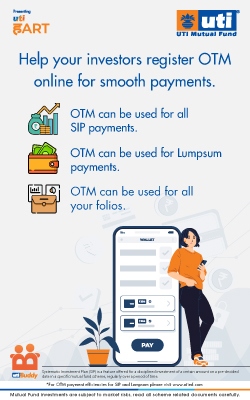Stephen Wershing, author of ‘Stop Asking for Referrals’ shares the importance of having a client advisory board.
 Client advisory boards are powerful business development tools. The successful advisory board leads to an increased share of wallet, more referrals, and more clients. Realizing the most benefit from your advisory board, however, depends upon following certain principles.
Client advisory boards are powerful business development tools. The successful advisory board leads to an increased share of wallet, more referrals, and more clients. Realizing the most benefit from your advisory board, however, depends upon following certain principles.
One key success ingredient is defining appropriate objectives for your board. When it comes to organizing your new advisory board, the meeting must be focused entirely on the clients needs. The primary and most obvious way of building value for board members is to take their guidance in improving their experience with your firm. How many client meetings per year is best? What would you like discussed in meetings that we are not discussing now? How is your experience with our staff members? What would your ideal advisor do that we don’t do now?
More fundamentally, we look to the advisory board to help you understand what is most attractive about your value proposition and what you do that they find most valuable. What we refer to as the “Why did you come/why do you stay” questions. You might be surprised at the answers. What clients most value about what you do may be something you think is a minor aspect of your service discipline. More commonly, something you think is of great importance to your clients may mean little to them. Even if you are correct about what clients value, there is one more thing you get from this exercise – you get the description in their language. One of the problems in advisor marketing is that you tend to tell people what you do in your language, forgetting most of your clients do not talk like other advisors. Getting the clients to say it out loud in their own words helps clarify for them how they should describe you to their friends when they refer you.
One good idea we frequently recommend is to engage the advisory board in discussing the results of a client survey. Any survey results that surprised you make for great material into which the advisory board can do a deep dive. "This answer was not what we were expecting. As representatives of our best clients, what do you believe was meant by these responses? How can we improve our performance in this area?" Eventually, the board will come around to guiding you in building your business. I discussed earlier involving the board in defining your practices ideal target prospects. They can provide feedback on adding new services, expanding geographically, adding staff, and other operational issues. Some of your board members may be independent business people like you. It makes sense that you would tap into their expertise to help you solve business issues as well as getting feedback on your level of service.
Some advisors delegate conceiving and planning client social events to their advisory board. One advisor we have worked with for many years has a board whose members set as one of the expectations of new members that they act as ambassadors for the firm, agreeing to provide references for any prospective clients. But he has been running his board for seven years. The board must be given time to receive value before we can have expectations for referrals. Asking "who can you introduce to us?" too early in the life of a board can be fatal to the process.
Composition of the board
A critical factor of success – having the right people in the room. So, who?
Many advisors think the advisory board should represent the spectrum of clients in their practice – this is a mistake. A clear and effective market niche is fundamental to a successful marketing plan. To help achieve clarity in tailoring your service mix and marketing strategy, your board should be composed of clients who represent your ideal client, your target client. Define your target market, and comprise the board of people like that. Leave the non-conforming clients out of the candidate pool.
Most of the candidates for your board will be among your best clients. "Best" does not mean all of your biggest clients, but most will be among your biggest. The ones you want more of. There is a difference between biggest and best. Every practice has a group of clients whose relationships they consider the most rewarding, who they most like to work with. Every practice has a couple big clients that are not among the advisors favorites to work with. Overly demanding clients, with philosophical differences over investment management, who demand special or different treatment. I worked with one firm whose core investment strategy involves portfolios of mutual funds. One of the firm's biggest clients, and income oriented retiree, demanded a portfolio composed primarily of individual bonds. While the firm appreciated this client, and they had a mutually beneficial relationship, his experience with the firm was fundamentally different than most of the other clients experiences. He would make a poor choice for the firm's advisory board.
Just like planning a shopping mall, the first thing you will want to identify is the “anchor” tenants. Clients who, because of the size of the relationship, their influence in the community, their influence in the target demographic, their dedication to the firm as expressed by the amount of referrals offered, or because of the quality of the input they are likely to contribute to board meetings, would be vital to the success of the advisory board. People who would be the answer to the question "if we were to assemble our most valuable clients, these would be the people we would have to have in the room."
Beyond the anchors, you want to fill the roster with other people from among your best clients so that the finished board would number from 12 to 16, with the expectation that any board meeting would be attended by 9 to 12 participants.
One of our secrets is to include one curmudgeon. Not a complainer, but not afraid to speak his mind.
Your clients like you, they enjoy their relationship with you, you're buying them a nice dinner – they don't want to hurt your feelings. The problem is that unless someone says something critical, the conversation will not be particularly valuable. A curmudgeon is important to break the ice.
We want to get that person to say something, preferably early in the meeting, that challenges how you do something. "One thing I really wish you would change…" "This advisor who keeps calling me offers this really great service…"
The key is in how you respond, actually how the facilitator responds. What is it about this service you would change? What is it that's most attractive about what that other advisor is offering? If this advisor were to offer something like that, how would you wanted to look? Once everyone sees your interest in hearing these kinds of comments, they know they can provide them to. The curmudgeon, and you, have given them permission to voice their concerns, and that is when the conversation gets interesting.
It's called a client advisory board but can you have more than clients?
You can include prospects and centers of influence. Non-clients can add a valuable perspective. Your clients understand and like what you offer. Do you have trouble attracting new clients? Maybe your marketing does not accurately reflect the experience you provide. An outsider can provide insight a client may not be able to. Clients can tell you why they chose you. I non-clients can tell you why they have not chosen you, at least not yet. Non-clients can tell you about what it would take to attract them as clients.
There are shortcomings. They cannot provide you feedback on service experience. If that is part of the discussion, they would feel left out.
Non-clients can also be useful for entering a new market or new service offering. If you want to provide a service to a group that is not currently represented in your client base, it can be an ideal way of evaluating whether and how to do it. "What would attract you? If we wanted to tailor practice to people like you, what would it need to look like?" Cab HQ experience bringing paycheck into new markets.
While there are special considerations, non-clients on your advisory board, or an advisory board entirely of non-clients, can provide unique and valuable feedback.
Stephen Wershing runs advisory coaching firm www.theclientdrivenpractice.com.
The views expressed in this article are solely of the author and do not necessarily reflect the views of Cafemutual.




